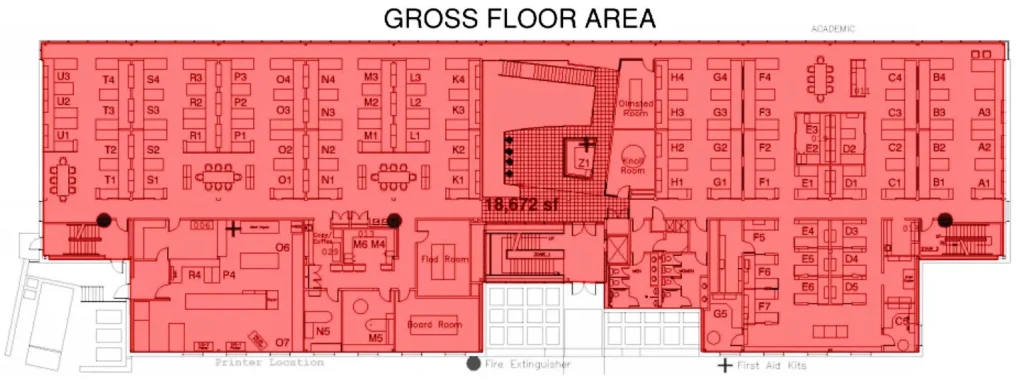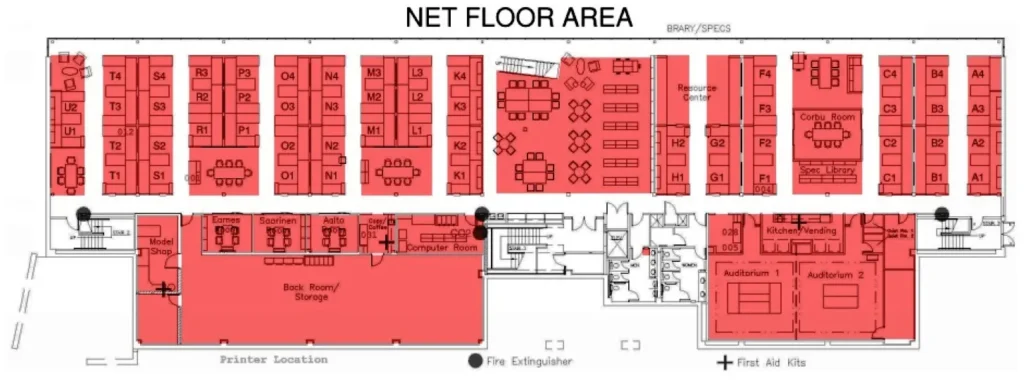If you want to know about the classification of building or refuge area or parking and turning radius, please click the link.
Occupant load calculation is the process of determining the maximum number of people that a building, room or space can accommodate safely. This calculation is typically based on building codes, which consider factors such as the floor area, means of egress, and fire safety.
The purpose of occupant load calculation is to ensure the safety of the occupants in case of an emergency, such as a fire. The calculation takes into account the use of the space, the occupancy classification, and the design and construction of the building. The number of occupants is used to determine the minimum number of exits, the width of exits, the size of fire suppression systems, and other safety features that must be provided.
The occupancy classification is based on the intended use of the space. For example, a space used for assembly, such as a theater or auditorium, will have a different occupancy classification than an office or a residence. The occupancy classification and the intended use of the space determine the occupant load factor, which is used to calculate the number of occupants.
1) Occupant load (definition)
Occupant Load = The total number of persons that might occupy a building or portion thereof at any one time.
Occupant load means the total number of persons that may occupy a workplace or portion of a workplace at any one time. The occupant load of a workplace is calculated by dividing the gross floor area of the workplace or portion of the workplace by the occupant load factor for that particular type of workplace occupancy.
1) Occupant load calculation for design a building
For determinant the exits needed, variety the amount the quantity of persons inside any floor space or the occupant load shall be supported the particular number of occupants declared, however in no case but that per table below.

Note – 1
Floor Area (Gross floor area (GFA))
- The area of the floor within the within perimeter of the outside walls of the floor of the building into account with no deductions for corridors and passageways, stairs, closets, thickness of interior walls, columns, lifts and building shafts or other options.

Net Floor Area (NFA)
- The actual occupied space not together with unoccupied accessory areas like corridors, stairways, rest room rooms, mechanical rooms and closets.

Note – 2
- Occupant load in dormitory parts of homes for the aged, orphanages, insane asylums, etc, wherever sleeping accommodation is provided, shall be calculated at not less than 7.5 m2 gross floor area/person.
Note – 3
- Occupant load in dormitory parts of homes for the aged, orphanages, insane asylums, etc, wherever sleeping accommodation is provided, shall be calculated at not less than 7.5 m2 gross floor area/person.
Note – 3
- These shall embrace gymnasium, Ping-Pong area, billiard parlor and different gambling rooms, library, athletic facility and like.
Note – 4
- In case of assembly occupancy having mounted seats, the occupier load shall be determined by multiplying the amount of seats by 1.2.
Note – 5
Car parking areas beneath occupancy aside from storage shall even be 30 M2 per person.
- The occupier load of a mezzanine floor discharging to a floor below shall be adscititious thereto floor occupancy and the capacity of the exits shall be designed for the total occupancy load therefore established.
- The occupier load of each story thought-about individually shall be needed to be utilized in computing the number of suggests that of egress at each story, as long as the required variety of suggests that of egress isn’t decreased in the direction of egress travel.
- The assembly occupancies and call centres shall be required to display, limiting occupant load details positioned in a very conspicuous place close to the doorway of each of such individual occupancy to avoid possible overcrowding and overloading.
- The display shall preferably be engraved on a metal plate of not less than 300 mm × 200 mm, with letters of height and width not less than 50 mm, with detail of occupancy, area and occupancy load (see figure below).

- The capacity of any open mezzanine/balcony shall be added to the capacity of the floor below for the purpose of determining exit capacity.
Calculation of Occupant load (number of person)

Assume Gross floor area = 500 sq.m. Occupant load factor given above figure.
Residential = 12.5 sq.m. / person
Educational = 4.0 sq.m. / person
—– = ——–
Occupant load (number of person)
For Residential = 500/12.5 = 40 persons
For Educational = 500/4 = 125 persons
In conclusion, the occupant load is a critical factor in building design and safety. Proper calculation of the occupant load is crucial for ensuring that a building is safe, complies with codes and regulations, and provides an appropriate amount of space for its intended use.
hello,
can you advise what is the calculation method as per the British code (UK)